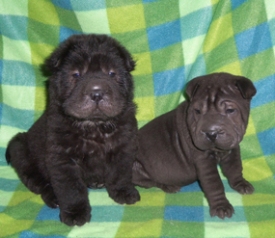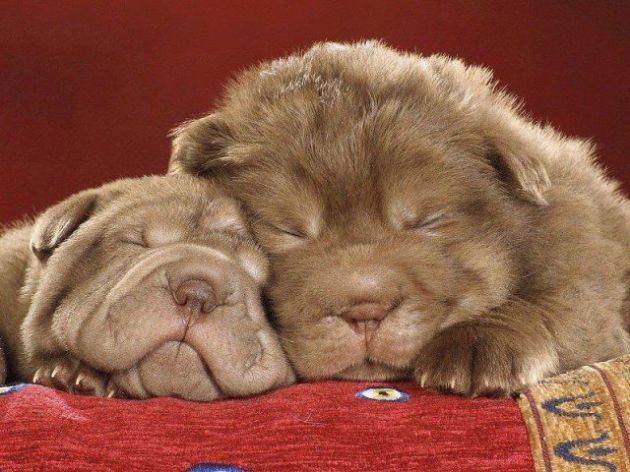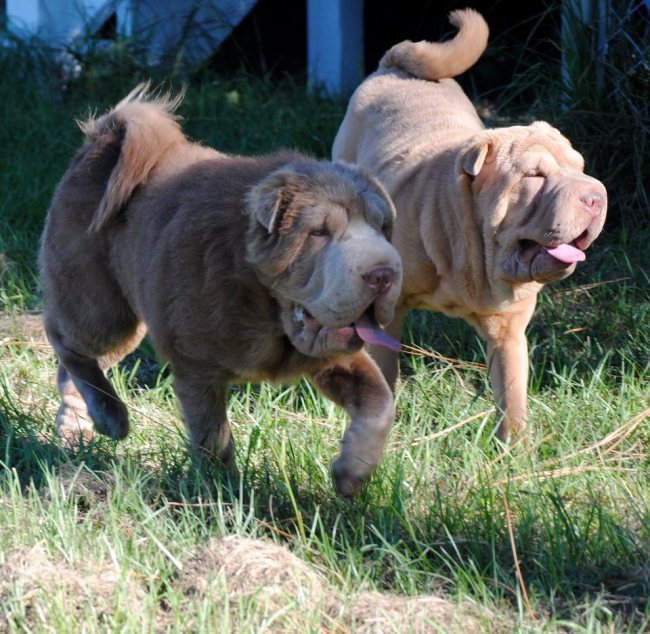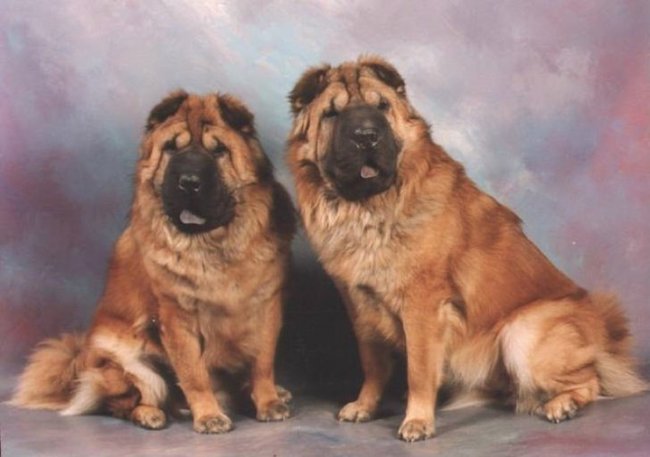Bearcoat Shar Pei
Bearcoat Shar Pei only appear when both parents carry the recessive gene for this coat type. The coat is longer than a brushcoat and resembles the coat of a Chow Chow, but not as think and dense. The gene for this coat type came from the original Shar Pei dogs brought over from China in 1973. Down Homes Anne Revival had a bearcoat sibling and more than likely carried the recessive bearcoat gene. Down Homes Anne Revival mated with Down Homes Sweet Pea produced the 1st Shar Pei registered in the United States – Down Homes China Souel. So this recessive bearcoat gene became sprinkled throughout many Shar Pei lines from the beginning. In fact, the CSPCA recognized the bearcoat Shar Pei as an acceptable coat length for a while and one of the earliest CSPCA champions was a bearcoat Shar Pei named Walnut Lane’s Rick of Poo. In later years the bearcoat was deemed a disqualifying fault which accounts for their lack of number today and their so called “undesirable” quality.
A bearcoat Shar Pei is very similar to the brushcoat Shar Pei except for the coat length. They tend to be heavier built and stocky with larger heads and thick padded muzzles. They also tend to retain wrinkle, but you can not see the wrinkle because of the coat length. They are calm and gentle adult Shar Pei and prefer to laze about the house. But it is also very important to socialize and train them as puppies. They are soft, fluffy little cotton balls as puppies and their coats retain the softness as an adult, but without the thick puppy undercoat. Bearcoat Shar Pei must be combed – not brushed. You will need to purchase a grooming comb. It is essential to comb them in the spring and fall when they shed. Because of the longer coat, their hair can mat easily during this time. If your bearcoat Shar Pei develops hair mats, you can use a clipper to remove the mats or VERY carefully cut them out with a dull pointed scissors. But it is easier to keep them combed, paying close attention to the areas on the neck, around the ears, on the back of the legs and the tail. These areas mat up easily and quickly.



